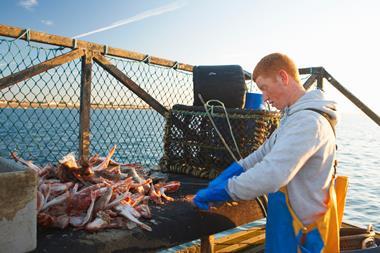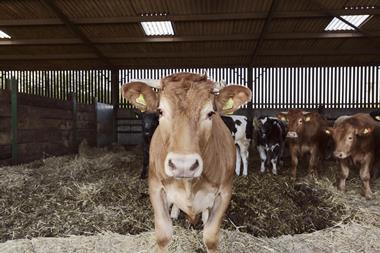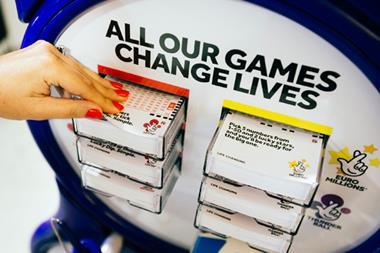Sales of chilled fish have fallen off a cliff as cash-strapped Brits opt for cheaper frozen fare.
Over the past 12 months, volume sales across the chilled category have fallen nearly 5%, while frozen has increased 1.4%. The figures mark a dramatic reversal of fortunes for chilled, which six months ago was in 0.3% growth while frozen was 2.6% down [Kantar Worldpanel 52w/e 5 September].
Natural fish the biggest sub-category in chilled has performed particularly badly, along with breaded and battered varieties. Volume sales of natural chilled fish have dropped 9.9% to 49.4 million kg over the past 12 months, while breaded has fallen 12.6% to 14.7 million kg and battered has slumped 24.9% to 349,000 kg [Kantar Worldpanel 52w/e 20 March 2011].
By contrast, frozen natural fillets have increased 3.5% year-on-year to 16.6 million kg, while sales of frozen battered fish have risen 3.7% to 29.4 million kg and breaded fillets are up 12.9% to 19.4 million kg.
The key reason for declining chilled fish sales is price, according to Kantar analyst Phil Smith.
Retail prices of chilled fish have gone up 4.8% over the past 12 months, while frozen prices have declined marginally, by 0.2%. "Prices are going up quite considerably across chilled fish, and some consumers have therefore started to switch to frozen," said Smith.
Natural chilled fish is now 9% more expensive per kg than it was a year ago, driven in part by supply issues such as the Chilean virus that upset global salmon markets and set prices soaring.
Breaded and battered fish products have also been hit hard the retail price of chilled battered fish products has risen 11.2% from £8.44/kg to £9.38/kg over the past year, while breaded fish is up 3% from £7.11 to £7.32.
"The demographics that buy breaded products tend to be relatively less affluent, meaning they can be more price sensitive and more likely to move across to frozen, which generally has lower price points," said Smith.
Over the past 12 months, volume sales across the chilled category have fallen nearly 5%, while frozen has increased 1.4%. The figures mark a dramatic reversal of fortunes for chilled, which six months ago was in 0.3% growth while frozen was 2.6% down [Kantar Worldpanel 52w/e 5 September].
Natural fish the biggest sub-category in chilled has performed particularly badly, along with breaded and battered varieties. Volume sales of natural chilled fish have dropped 9.9% to 49.4 million kg over the past 12 months, while breaded has fallen 12.6% to 14.7 million kg and battered has slumped 24.9% to 349,000 kg [Kantar Worldpanel 52w/e 20 March 2011].
By contrast, frozen natural fillets have increased 3.5% year-on-year to 16.6 million kg, while sales of frozen battered fish have risen 3.7% to 29.4 million kg and breaded fillets are up 12.9% to 19.4 million kg.
The key reason for declining chilled fish sales is price, according to Kantar analyst Phil Smith.
Retail prices of chilled fish have gone up 4.8% over the past 12 months, while frozen prices have declined marginally, by 0.2%. "Prices are going up quite considerably across chilled fish, and some consumers have therefore started to switch to frozen," said Smith.
Natural chilled fish is now 9% more expensive per kg than it was a year ago, driven in part by supply issues such as the Chilean virus that upset global salmon markets and set prices soaring.
Breaded and battered fish products have also been hit hard the retail price of chilled battered fish products has risen 11.2% from £8.44/kg to £9.38/kg over the past year, while breaded fish is up 3% from £7.11 to £7.32.
"The demographics that buy breaded products tend to be relatively less affluent, meaning they can be more price sensitive and more likely to move across to frozen, which generally has lower price points," said Smith.

















No comments yet